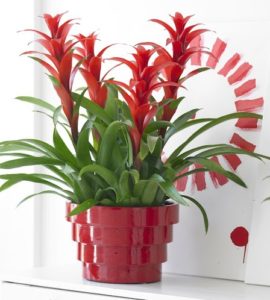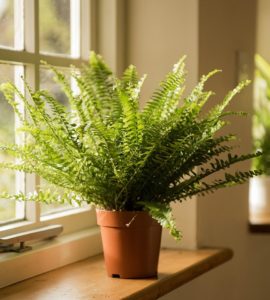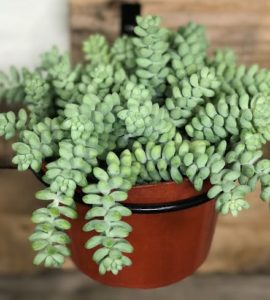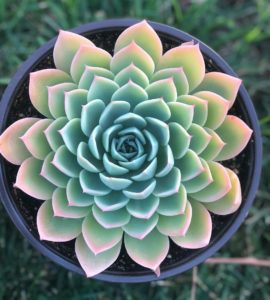Criteria for choosing indoor flowers usually include personal tastes, indoor climate parameters and the presence or absence of allergies to pollen or plant aroma. For pet owners, the choice of potted flowers is complicated by the issue of plant safety for the pet. The main “hunters” for flower pots are cats: these tame predators often taste the stems and leaves of plants, so a caring owner should choose only plants that are safe for cats. We’ve learned which houseplants are safe for cats to help growers choose crops that won’t harm your pets.
The areca plant can easily replace the sago palms, which are dangerous for pets. The size of an adult areca reaches from one and a half to three meters, depending on the conditions of detention. This palm crop loves moisture and direct sunlight, and also cleans the air well of toxic compounds of acetone, toluene and xylene.
Aspidistra is the perfect answer when it comes to which house plants are safe for cats. This flower with wide and smooth green leaves grows to medium size, coping well with irregular watering, temperature changes, dustiness in the house and other adverse environmental conditions. Aspidistra will forgive you almost everything except the direct rays of the sun: prolonged exposure to bright sunlight can lead to burns on the leaves.
A strict plant with straight golden-yellow stems will be a good addition to the interior of the house, harmless to pets. The color saturation of bamboo stems depends on the intensity of sunlight. The plant is unpretentious in terms of keeping conditions: it grows quickly and luxuriantly, even if there are mistakes in care.
This plant is also called “horse tail” (for the shape of the crown) or “elephant’s leg” (because of the bottle-shaped stem), and it adds to the list of plants that are safe for cats. Bocarnea is drought tolerant, loves bright, diffused light and needs abundant, but not too frequent watering in the warm season and scarce in the winter.
This flower (like all bromeliads) is safe for animals, and growing a bromeliad in a pot is easy: all it needs is bright sunlight and above average humidity. Bromeliads also differ from other potted crops in one more feature: some species of this plant do not need soil for maintenance. Epiphytic bromeliads absorb nutrients from the leaves, not the roots, like other flowers: their root system acts as an “anchor” that anchors the plant in the substrate. The lack of a pot of soil makes bromeliads less attractive to pets who like to dig in the ground. Thanks to this feature, bromeliads and curious pets coexist peacefully and without loss.
The Decembrist (aka Schlumberger or Zygocactus) does not have thorns, although it belongs to cactus. This flower does not like direct sunlight, preferring diffused light or slight shading and above average humidity. Schlumberger blooms exactly when summer begins in her historical homeland – in the tropics. In our latitudes, this period falls on December: by Christmas, the zygocactus usually releases bright pink or red inflorescences that are safe for animals.
Arrowroot, or praying grass, loves warmth and abundance of diffused sunlight. The flower feels good in high humidity conditions, so it is recommended to spray it with a spray bottle and water it abundantly in summer, reducing the amount of moisture to moderate in winter. Arrowroot is a safe plant for cats: even if a pet eats one or more variegated leaves, the likelihood of developing digestive disorders is extremely small.
Nephrolepis is one of the most unpretentious indoor plants to care for: all it needs for a happy life is an abundance of moisture. Regular watering and diffused sunlight will help maintain the spectacular appearance of the flower. Nephrolepis looks great in hanging baskets and grows actively in the presence of a humidifier or with frequent spraying.
Important: Despite its extremely low toxicity to pets, nephrolepis, like other ferns, can cause allergy symptoms in people prone to allergy.
Exotic orchids (such as classic phalaenopsis or miltonia) are house plants that are safe for cats. Tropical beauties love diffused sunlight, high humidity and “hot” showers: it is useful to water the flower from a watering can with settled water heated to 45 degrees, thus simulating rain in the jungle. Neither the leaves nor the flowers of the orchid cause poisoning in cats and dogs.
Sedum, or sedum, Morgana is a light-loving plant from the genus fatty, which will happily live in direct sunlight. The plant loves airing, but without drafts, and prefers low humidity in combination with moderate watering. Despite the layer of waxy coating, sedum is not harmful to pets if the leaves are accidentally or deliberately swallowed.
Plectranthus, or bristle, prefers to live in partial shade or under diffused sunlight. The plant loves frequent and abundant watering, and on hot days it will thank for its attractive appearance for spraying or additional moistening of the soil in the pot.
Saintpaulia is also called the Usambara violet. This plant blooms almost all year round, and in good light it continues to grow even in the cold season. Violet prefers to live in constantly moist soil, and also loves high air humidity: in natural conditions, this plant settles near water bodies. Due to the fleecy surface of the leaves, it is not recommended to spray Saintpaulia, but pallets with wet pebbles are just what the flower needs.
Haworthia is a succulent that prefers to live in bright sunlight with moderate watering. The flower is unpretentious: the level of humidity in the room and the temperature regime do not matter for it, and its low toxicity allows it to be classified as indoor plants that are safe for cats. Be careful with watering: if water gets into the outlet, the flower can rot.
Hamedorea palm prefers poorly lit places, moderate humidity and abundant watering. In hot weather, the plant can be sprayed or bathed under the shower (if there is good drainage in the pot). Depending on the subtype, the size of an adult plant can range from half a meter to two meters. Palm clears the air from harmful volatile substances (ammonia, benzene and formaldehyde).
Echeveria is another animal-safe succulent. This flower is also called a stone rose. Echeveria loves diffused bright light and systematic watering. The color of the flower often depends on the intensity of illumination: the more light hits the stems and fleshy leaves, the brighter they become. The moisture level does not significantly affect the condition of the plant.
Important! Indigestion, vomiting, diarrhea and intestinal cramps in a domestic cat is possible even if he eats a non-toxic plant. Experts recommend not only to be interested in what plants are safe for cats, but also to keep any house flowers in places where it will be difficult for the pet to reach. The ideal option is to keep plants in hanging pots: by choosing the optimal height for placing the hanging basket, you will preserve both the appearance of the flower and the health of your pet.




